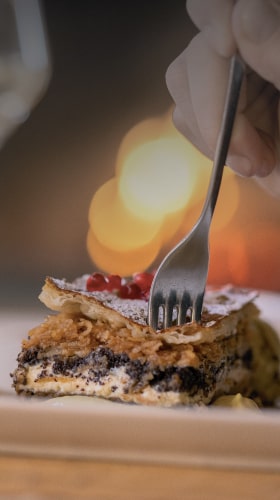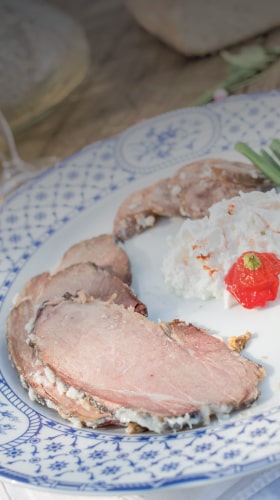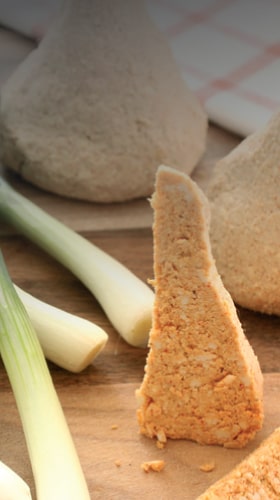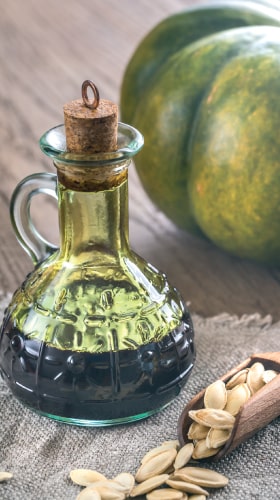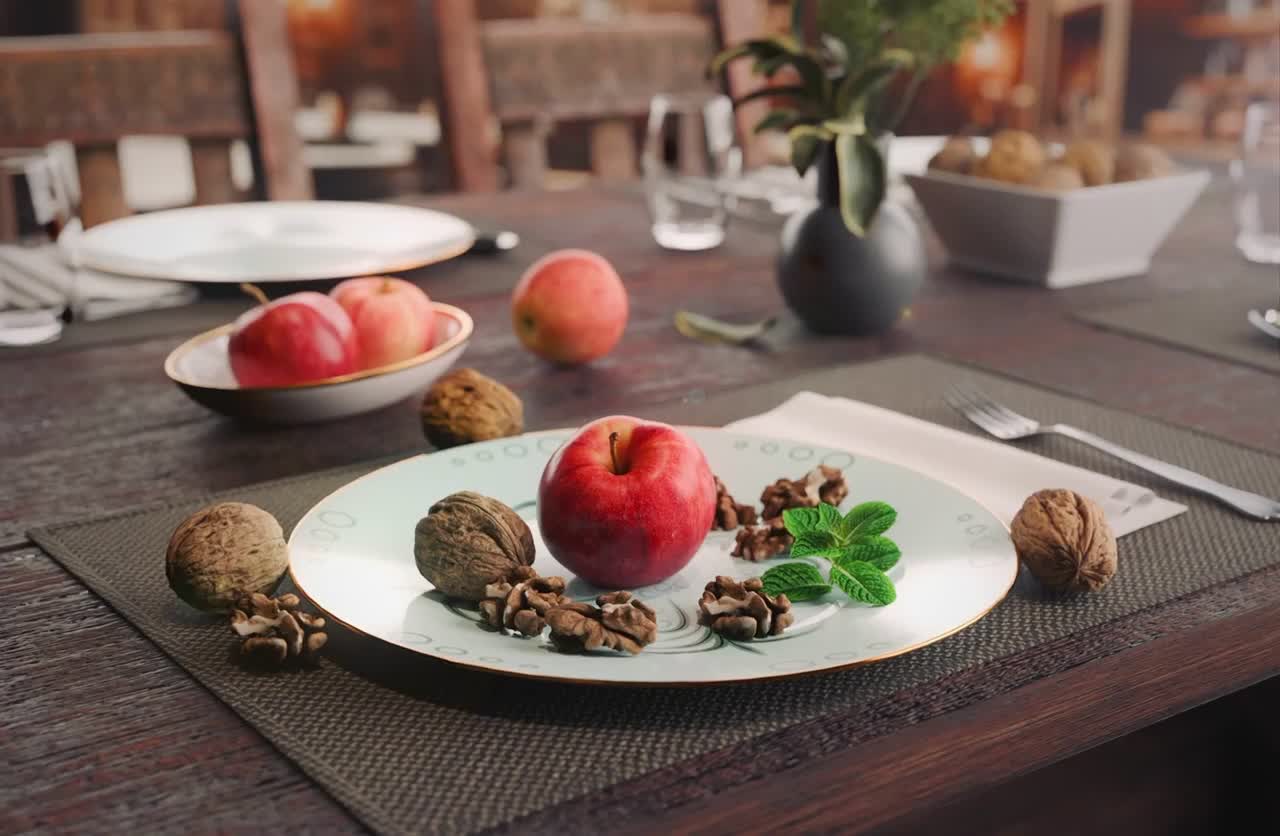
Cuisine
Međimurje preserves and offers authentic flavours of meso 'z tiblice (dry cured meat in bacon fat), pumpkin seed oil or the unique međimurska gibanica layer cake. Today they are prepared in a new, attractive way.
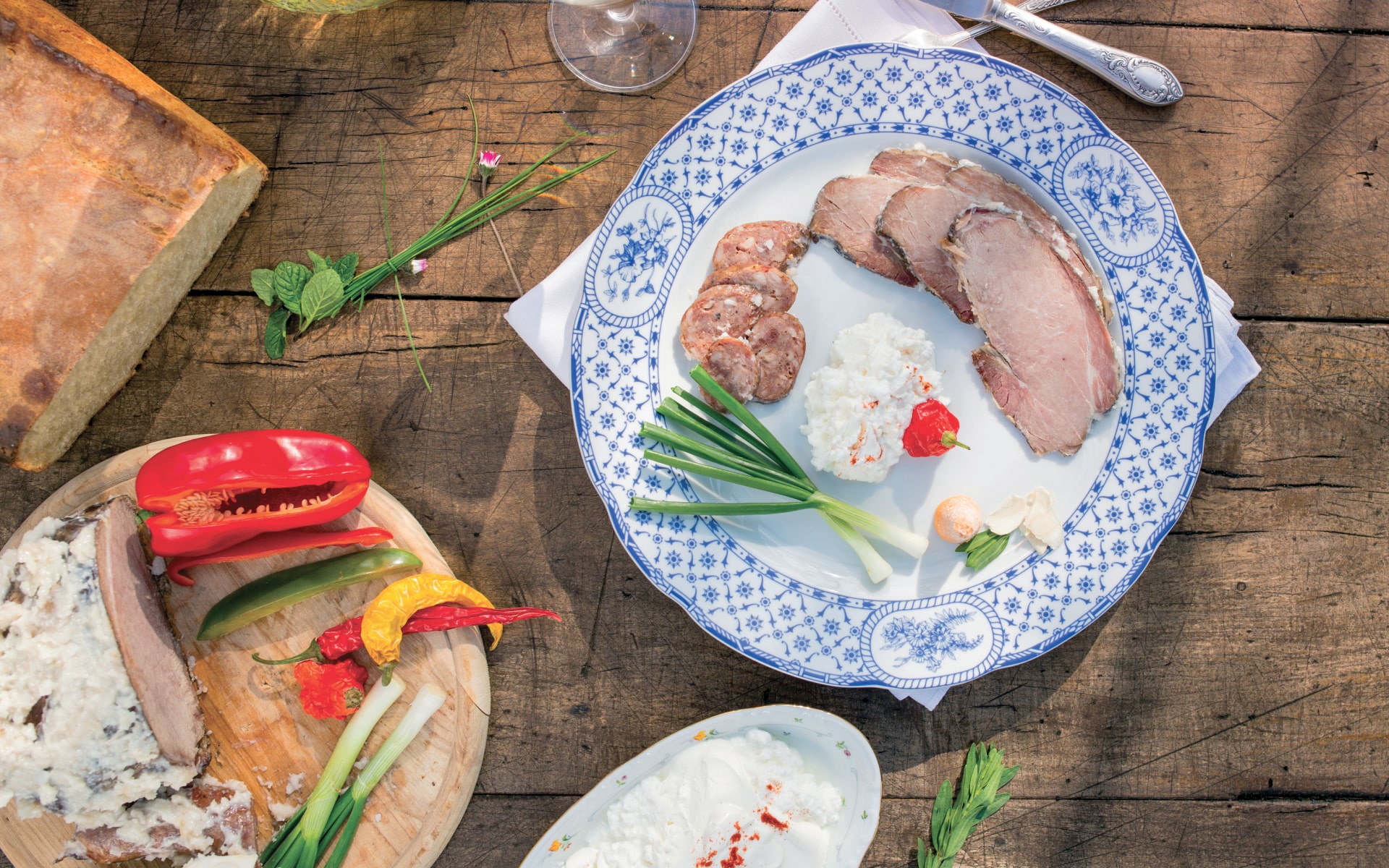
Premium culinary experience is a guarantee in about ten restaurants labelled as the ‘Golden Gourmet of Međimurje’. The renowned ‘Mala hiža’ is the leading restaurant among them, since it has been continuously listed as a top restaurant by Dobri restorani (Cro. Great restaurants) and has been recommended by Michelin and Gault & Millau guides.
The quality of sustainable tourism and local gastronomy in Međimurje has been recognized in Europe. The region has been awarded the EDEN (European Destination of Excellence) label, and the prestigious Swiss Tourism Award. Globally, it has been included in the selected Network of Gastronomy at UNWTO.
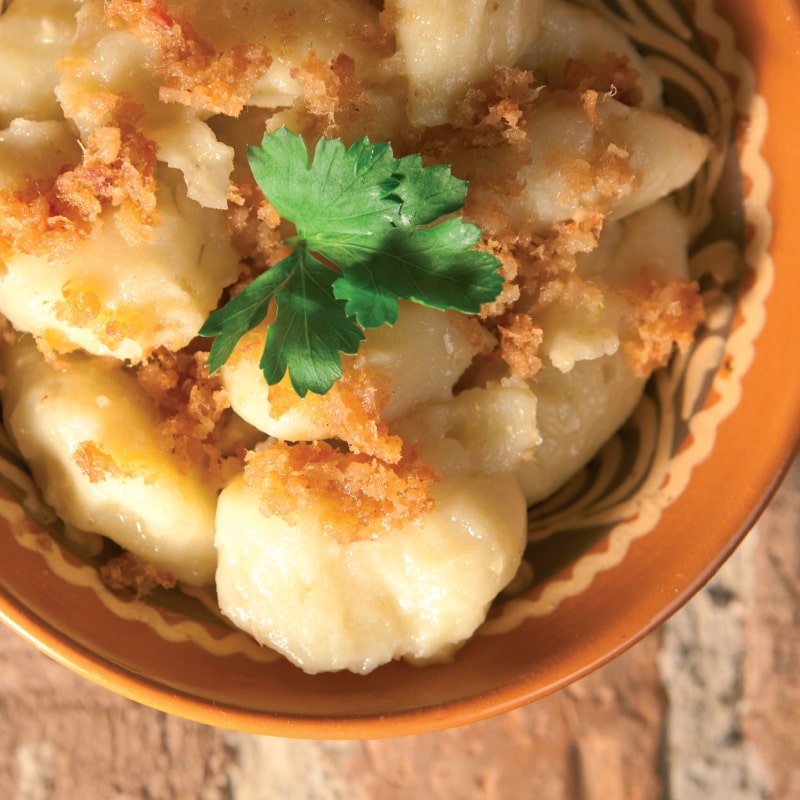
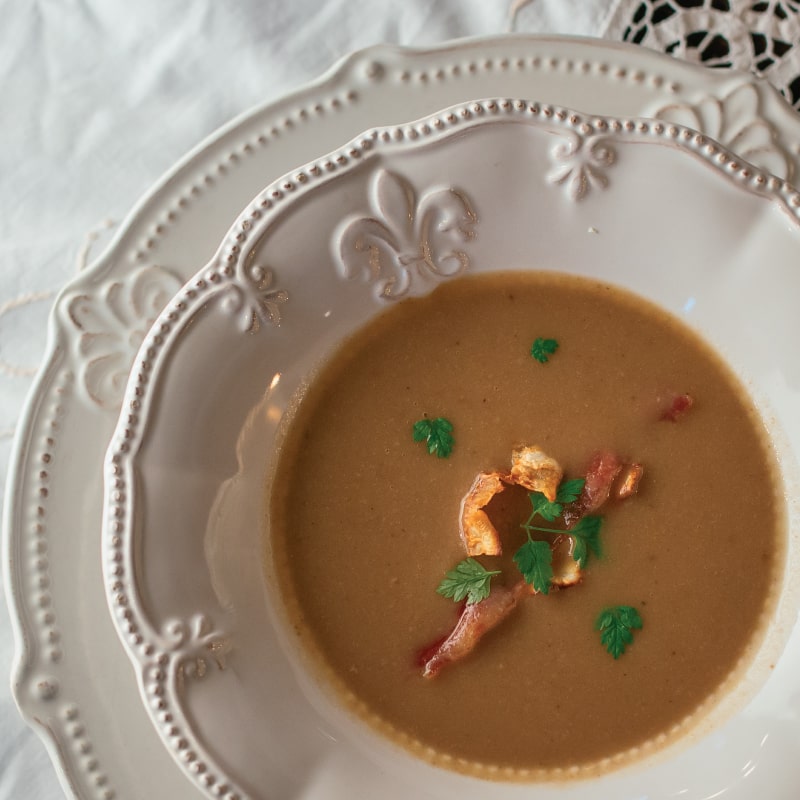
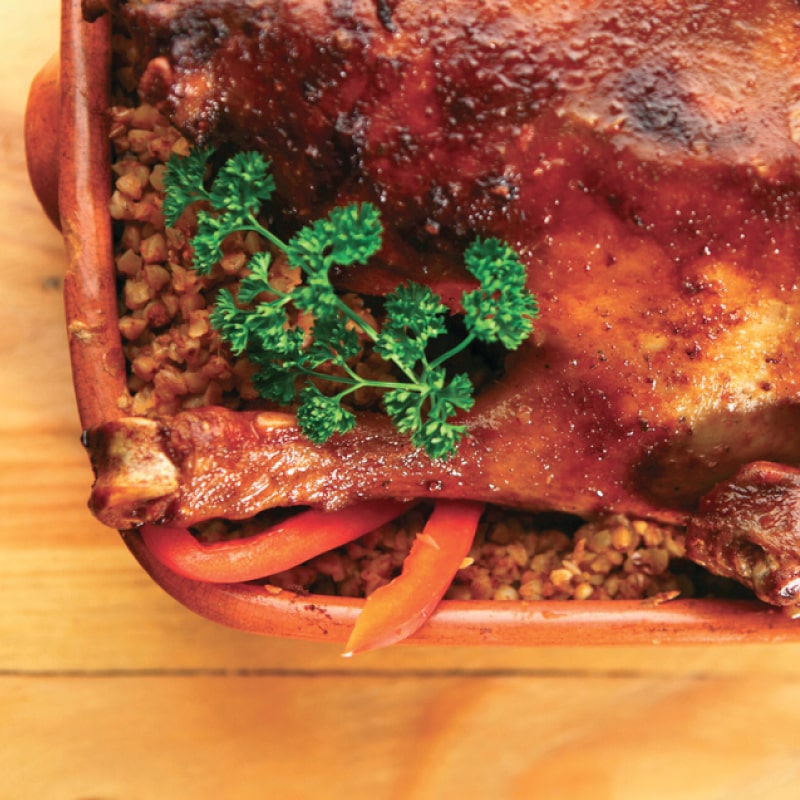
Features of cuisine in Međimurje
People in Međimurje rightfully take great pride in their cuisine. Taking a look in the guestbooks, the guest reviews can generally be summarized as follows: ‘We like to go back to the places where we created fond memories. Once you get to know and experience Međimurje, the Mesopotamia in northern Croatia, you feel fulfilled and can’t wait for more. We are going to return with our friends, just to enjoy the captivating flavours of the black pumpkin seed oil, meso ‘z tiblice (dry cured meat), river zander, impressive wines
Tell me more
and međimurska gibanica layer cake in one of the fifty quaint taverns, family farms and restaurants, where breakfast, lunchtime and dinner dishes are skillfully made according to authentic and modern recipes’.
Restaurants awarded the prestigious ‘Međimurje Gourmet’ label are the most popular. Namely, the label indicates a high standard of culinary knowledge and ingredients preparation, well thought-out menus and wine lists, professional guest service and top-notch decoration. Furthermore, the region has been given the important EDEN - European Destination of Excellence award for enogastronomy, which represents the most trustworthy invitation to the paradise ‘between two rivers’.
Several features distinguish the cuisine in Međimurje. Traditional dishes are frequently made with milk, cured meat and have plenty of vegetables. A particular favourite among the locals are beans, potato, cabbage, bean and sour cabbage stew, buckwheat porridge. Typical meat-based meals include pork, poultry and game as well as river fish covered in corn flour and then fried. Cow and goat milk as well as cheese are appreciated too.
Show less
“You peel a little, then slice a bit, mix it all up and there’s your lunch.”
— T. B.
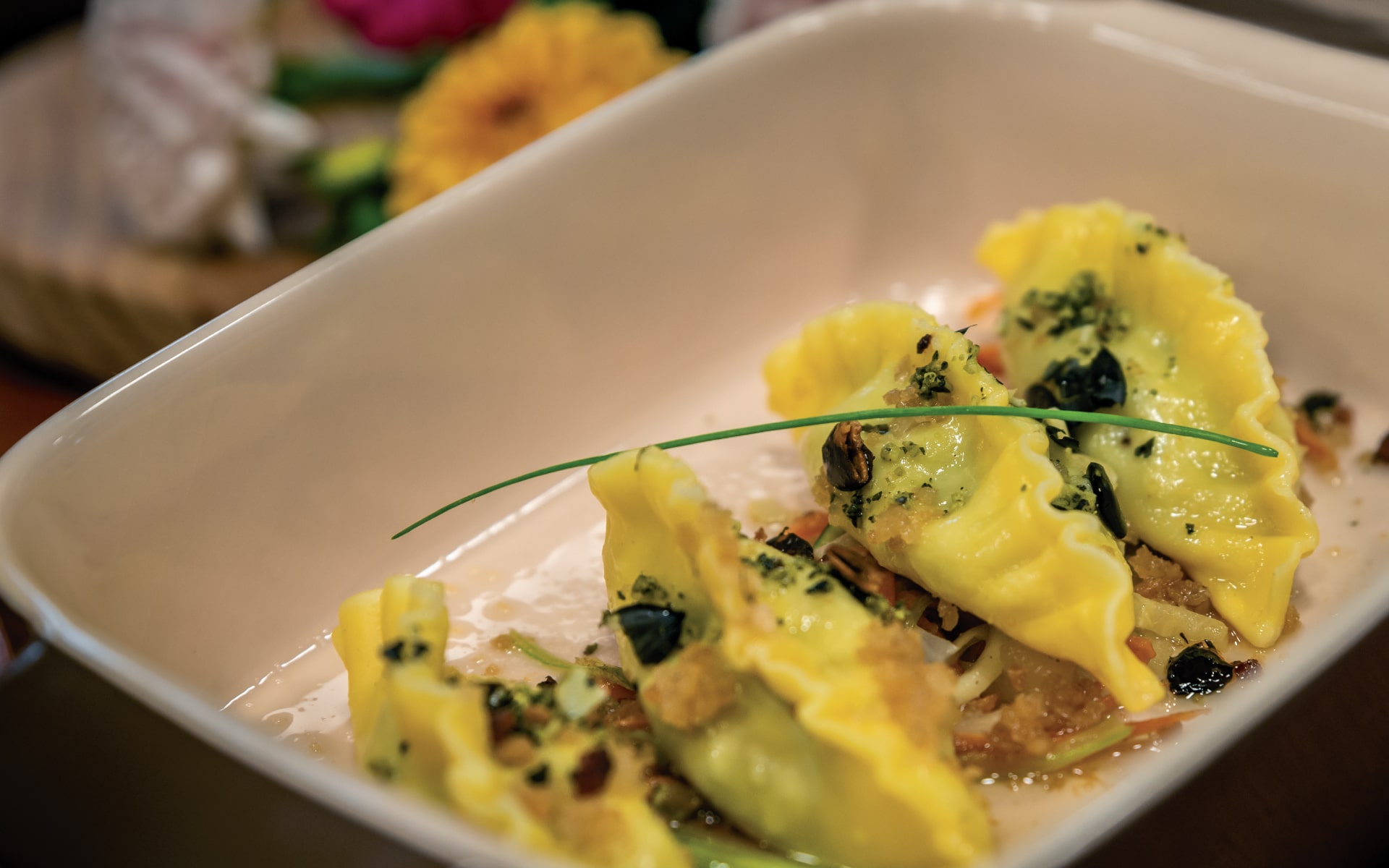
Cuisine in Međimurje as it once was
Tell me more
‘We can only admire in the cookbook the way various dishes come right one after the other featuring flour and sour cream soups, meat in sour cream gravy or simmered meat, game meat in black broth made with blood and wine, geese and ducks filled with buckwheat porridge, meatloaves, roosters and locally grown hens with diverse sauces together with mushrooms from local forests; fish, carp, sturgeon, pike, trout, zander, catfish all from local rivers, channels, backwaters and ponds, and prepared with butter or sour cream, in wine sauce, baked, fried and cooked. The cookbook references clear influences from coastal, Hungarian, German, Austrian and Italian cuisine, all embedded in the authentic culinary tradition made famous across Austria, Hungary, Italy and elsewhere in Europe from the court in the Zrinski castle in Čakovec, where it was enjoyed with premium wines from ban Nikola’s cellar. Just as it did back then on the court in Čakovec, so does the cuisine in Međimurje continue to exude authentic flavours and aromas. It has shown a strong ability to fuse various influences in a unique culinary expression not to mention the ability to keep and transform its culinary heritage. - as written by the renowned Croatian culinary expert and author Veljko Barbieri Restaurants in Međimurje today inevitably serve refreshing or invigorating soups, meat or fish dishes, game meat, salads, creative side dishes and premium desserts.
Show less
Međimurje Gourmet
Restaurants holding the Međimurje Gourmet label are evaluated by mystery guests, who arrive unannounced for lunch or dinner. Their task is to objectively assess the performance on the basis of 42 criteria. The label aims to promote culinary excellence. While categories such as space, staff, equipment, dishes and offer are closely monitored and evaluated, the food is, in fact, the most important element. A lot of details play a role in making a good impression and captivating guests so that they are willing to return and make a recommendation. Both interior and exterior need to provide a comfortable feel, just as tidiness in every aspect and great value for money are very important. Still, food quality is undoubtedly a decisive factor.
sweet potato fries
pumpkin soup
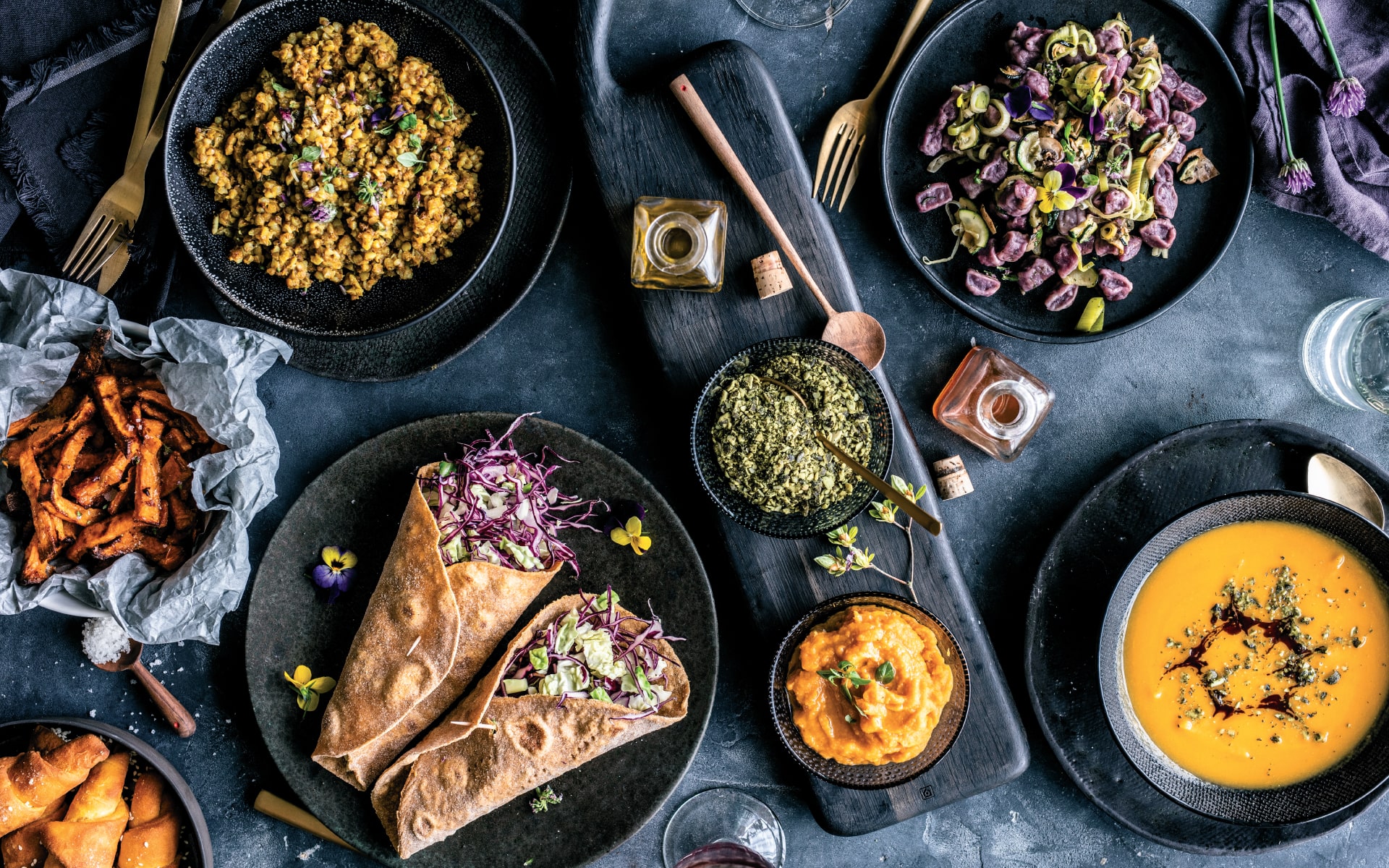
Holders of the label Traditional Flavours of Međimurje welcome you to a wide variety of culinary gems. A truly enjoyable dining experience filled with traditional aromas and flavours awaits you. Local, authentic and traditional aromas and flavours of dishes, top wines, drinks and home-made meals are real treats for the ‘body and soul’. It’s how you experience the richness and diversity reflecting the surprising simplicity and imagination of local homemakers in their modest homes. It’s also how you get to appreciate exceptional culinary abilities and skills shown in private, public and noble kitchens. They all delight with culinary methods that preserve the flavours and premium quality of local ingredients.
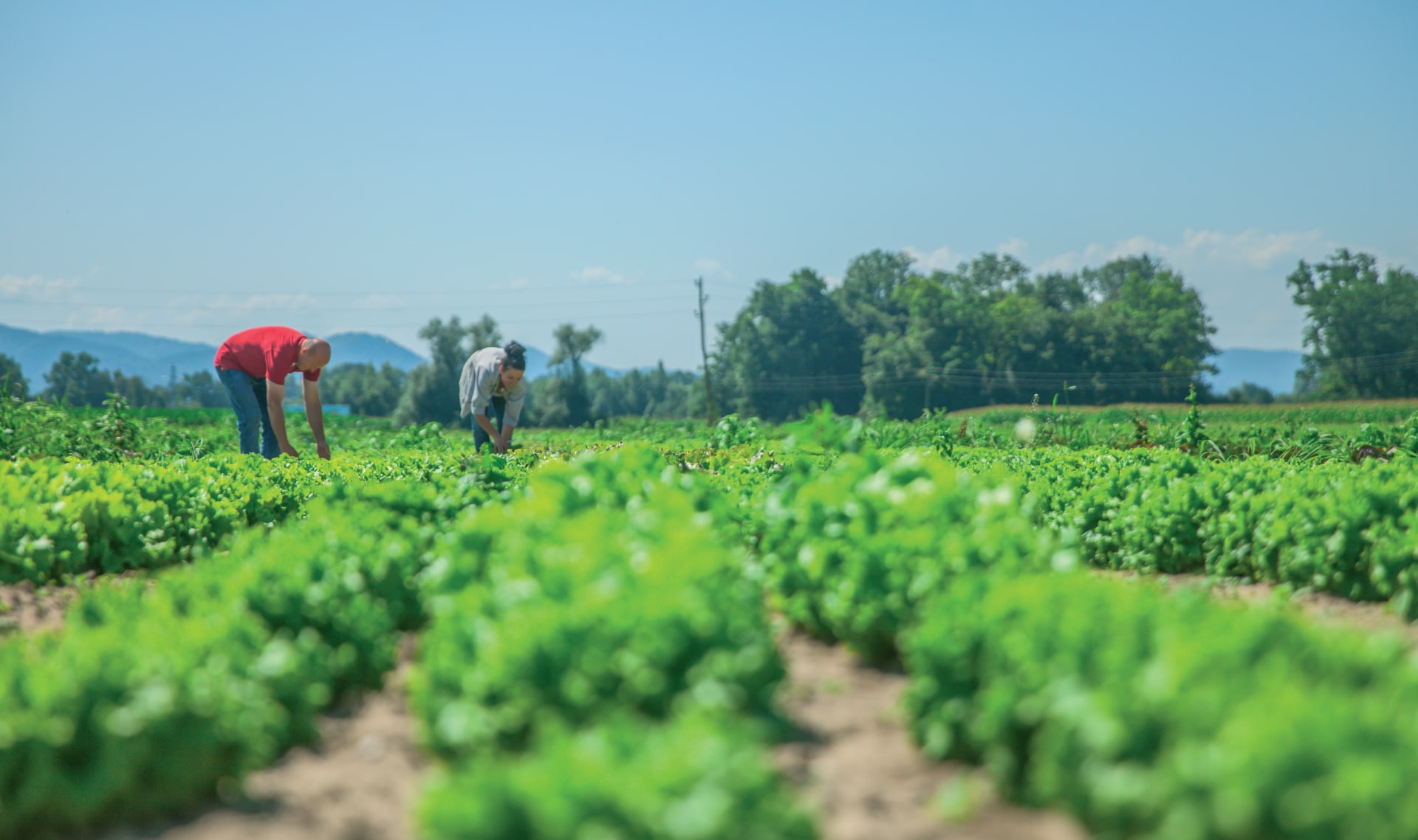
Međimurje is the birthplace of dr. Rudolf Steiner, the founder of biodynamic agriculture. Dr. Rudolf Steiner Centre has been recognized for promoting biodynamic agricultural production which represents the synergy of science, art and spiritual practice. It also comprises great knowledge and continuous study of cosmic cycles. The Centre encourages and promotes active cooperation between the producers and consumers as well as interaction with nature. Visiting the Centre you learn about selected farmers who grow food by applying the biodynamic methods and practices that have a beneficial effect on the soil and environment.
